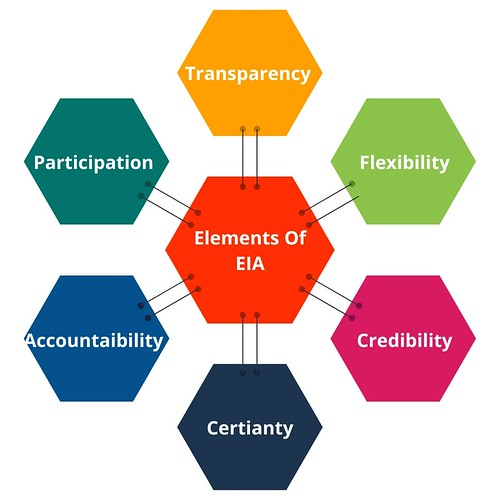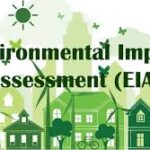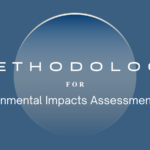The key elements of an Environmental Impact Assessment (EIA) include:

- Identification of Potential Impacts: This involves identifying and understanding the potential environmental effects that a proposed project, plan, or policy might have. It looks at both positive and negative impacts on the environment and surrounding communities.
- Baseline Data Collection: Gathering comprehensive information about the current environmental conditions of the area where the project is proposed. This serves as a reference point for comparing the potential impacts of the project.
- Impact Prediction and Evaluation: Predicting and evaluating the potential environmental impacts of the proposed project based on its characteristics and the baseline data collected. This step helps in understanding the magnitude and significance of the impacts.
- Mitigation Measures: Recommending measures to avoid, minimize, or mitigate adverse environmental impacts identified during the assessment. This may involve redesigning the project, adopting alternative technologies, or implementing pollution control measures.
- Environmental Management Plan (EMP): Developing a plan to manage and monitor the environmental aspects of the project during its implementation phase. This includes outlining procedures for compliance with environmental regulations, monitoring environmental performance, and addressing any unforeseen impacts.
- Public Participation: This is Involving of stakeholders, including local communities, NGOs, and other interested parties, in the EIA process. To ensure that their concerns and perspectives are taken into due consideration in decision-making and it in turn ensures transparency and accountability.
- Review and Decision-Making: Reviewing the EIA report and its findings, which includes mitigation measures and the environmental management plan. Decision-makers use this information to make informed decisions about whether to approve, modify, or reject the proposed project.
These elements work together to ensure that environmental considerations are integrated into the planning and decision-making process, ultimately leading to more sustainable development practices.
Also Read: Everything about Environmental Impact Assessment







1 thought on “What are The key elements of an Environmental Impact Assessment EIA?”